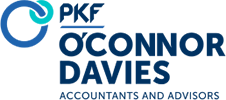Key Takeaways
- The federal appeals court ruling led to the formal closure of USAID.
- Not-for-profits should proactively assess their funding mix to build long-term resilience.
- Long-term planning and alternative funding sources are essential for managing federal funding risks.
A federal appeals court ruling on Friday, March 28 resulted in the formal closing of the US Agency for International Development (USAID). This decision is the latest in a series of legal rulings concerning the current administration’s efforts to reduce waste across federal agencies.
The US State Department is formally closing USAID and plans to take over its $40 billion operations by July 1, aiming to centralize oversight and improve efficiency. It is still uncertain what impact the transition of USAID’s operations to the State Department will have on not-for-profits receiving grant funding from USAID. It is expected that legal challenges to the shutdown will continue. However, it is safe to assume that funding may be reduced or eliminated altogether for programs not aligned with the current administration’s objectives.
Regardless of whether your organization is currently receiving federal USAID support, it’s critical to proactively assess your funding mix to help ensure long-term resilience. We continue to provide the following suggestions for not-for-profits to prepare for potential changes in federal funding streams.
- Cash Flow Projections: Robust budget and cash flow models are important to determine which actions may be required in response to different economic scenarios. Organizations should look at both short- and long-term scenarios to ensure adequate cash flow needs.
- Drawing on Reserves: Organizations should examine any cash reserves set aside by the board to ascertain whether amounts need to be utilized to continue operations.
- Borrowings and Lines of Credit: Organizations should contact financial institutions to determine whether existing or new lines of credit can be drawn down or obtained as a source of temporary cash inflows to sustain operations.
- Long-Term Scenario Planning: Leadership and board governance should also collaborate to determine any potential impacts to current and future programs. This should encompass, but not be limited to, staffing and programmatic considerations, should federal assistance be reduced or eliminated in the future.
- Alternative Funding Sources: Organizations should seek other sources of private and public funding to make up for any shortfalls caused by federal funding restrictions.
We will continue to provide you with updates and further guidance on a regular basis.
Contact Us
If you have any questions, please contact your PKF O’Connor Davies client service team or:
Mark J. Piszko, CPA, CGMA
Partner-in-Charge
Not-for-Profit Services
mpiszko@pkfod.com | 646.449.6316

